Brazil Prefabricated Buildings Market Size
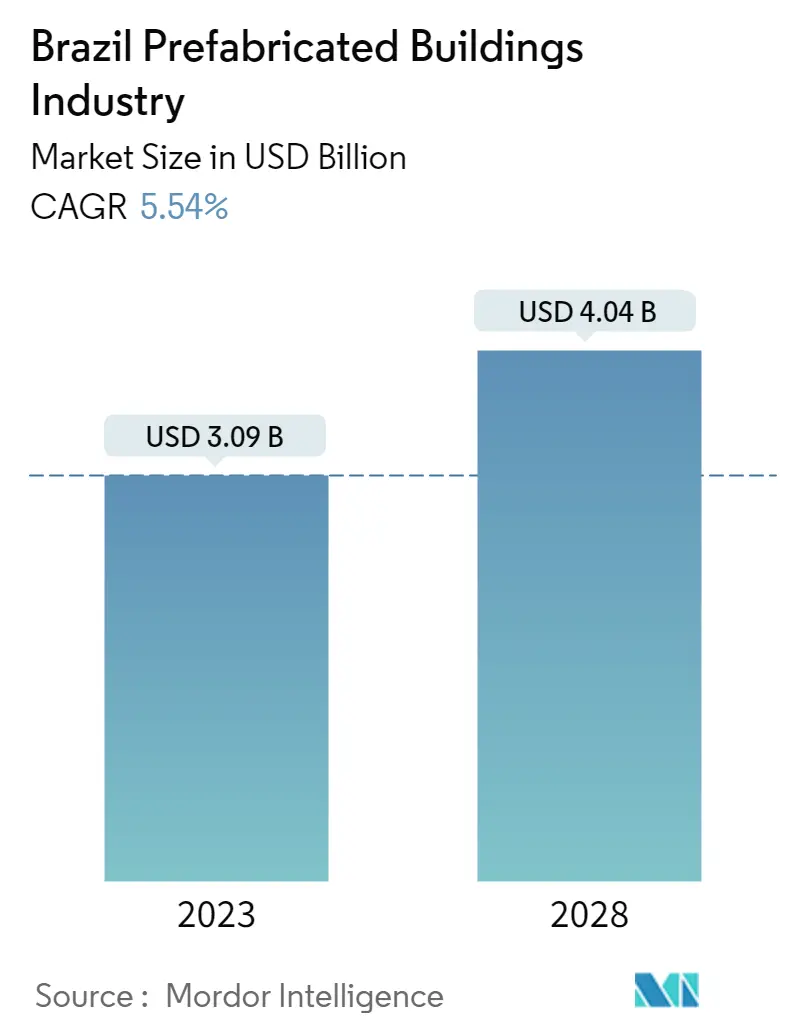
| Study Period | 2019 - 2028 |
| Base Year For Estimation | 2022 |
| Market Size (2023) | USD 3.09 Billion |
| Market Size (2028) | USD 4.04 Billion |
| CAGR (2023 - 2028) | 5.54 % |
| Market Concentration | Medium |
Major Players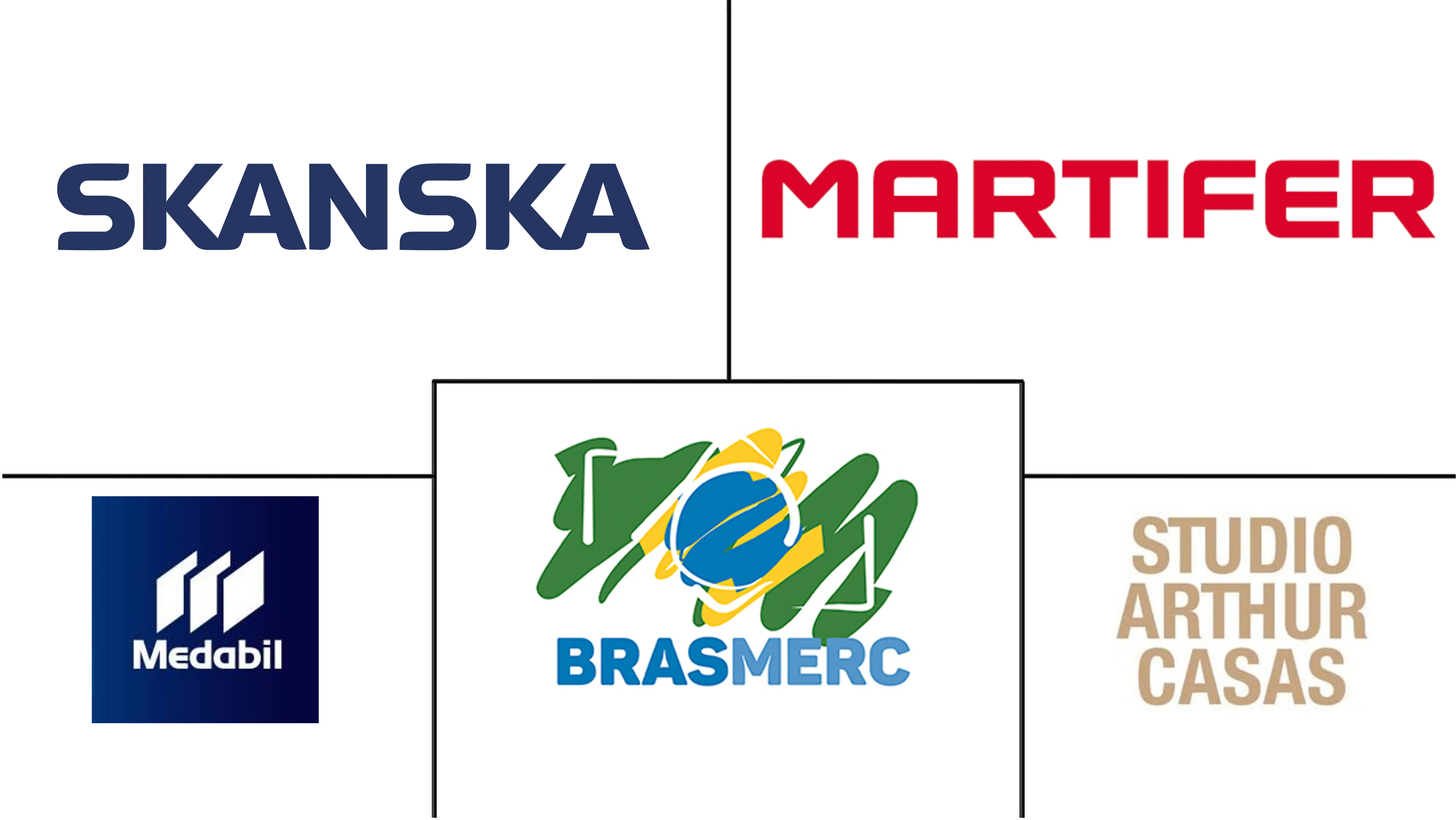
*Disclaimer: Major Players sorted in no particular order |
Need a report that reflects how COVID-19 has impacted this market and its growth?
Brazil Prefabricated Buildings Market Analysis
The Brazil Prefabricated Buildings Market size is expected to grow from USD 3.09 billion in 2023 to USD 4.04 billion by 2028, at a CAGR of 5.54% during the forecast period (2023-2028).
- Modular construction is new in the country, especially for housing. However, as in many other countries, the pandemic, especially the hospital built in China, brought lots of attention to modular construction. There are very few suppliers of the materials the market need. So customers end up adopting a lot of materials from traditional construction. Given the lack of options available, providing the kind of finish clients expect can be challenging. The transport regulations do not allow manufacturers to transport larger units by road, which are not always well-maintained,
- Small projects in Brazil are rising for commercial tourism, taking advantage of cost-effective and fast prefabrication construction techniques. Due to the economy, rationalization, and work speed, Brazil's largest portion of school projects are designed from prefabricated concrete elements with rigid modulations and, in rare cases, steel.
- The Brazilian company Urban3D is prefabricating the parts of buildings and then assembling them on-site to combat Brazil's housing crisis. This method requires human workers to assemble the buildings. It also shows how the techniques of 3D printing can be used to quickly and efficiently support the needs of society. Driven by the housing crisis, affordable and smart housing, the prefabricated buildings industry is expected to grow during the forecast period.
Brazil Prefabricated Buildings Market Trends
Opportunities in Residential & Infrastructure Sectors to Boost the Prefabricated market
Bearing in mind the low/medium income brackets that buy properties via government incentive programs for home ownership, such as Casa Verde Amarela (CVA) and Sistema Brasileiro de Poupança e Empréstimo (SBPE), the housing deficit in Brazil remains very large - reaching 6 million units in 2021.
The total housing stock in the country was only 204,000 units, and sales until that period totaled 188,000 units. It was an increase of 23% per year, despite the high levels of unemployment, which is around 12% nowadays, but in a downward trend, impacting the household budgets. The city's extreme housing deficiency especially influences helpless occupants. As recent information indicates, at least 13,706 of its poorest family units (those earning less than times a monthly wage of USD 250) live in ghettos or vagrant settlements. Another 53,214 share lodging with different families, and 22,297 family units live in overcrowded conditions.
Another important urban infrastructure area is the construction of schools. Schools require diverse and complex programs and flows. Therefore, developing an educational project is one of the greatest challenges for architects. Due to the economy, rationalization, and work speed, Brazil's largest portion of school projects are designed from prefabricated concrete elements with rigid modulations and, in rare cases, steel. Brazil's most recent school building constructions are prefabricated, FDE - Golden Park School V / Apiacás Arquitetos, FDE Public School / FGMF, and Campinas School / bvy Arquitectos, to name a few.
Not to mention the potential demand in the infrastructure sector, with several promises of construction developments in sanitation, irrigation, and infrastructure auctions coming to fruition. It will positively impact the results of the prefabricated industry in the construction sector.
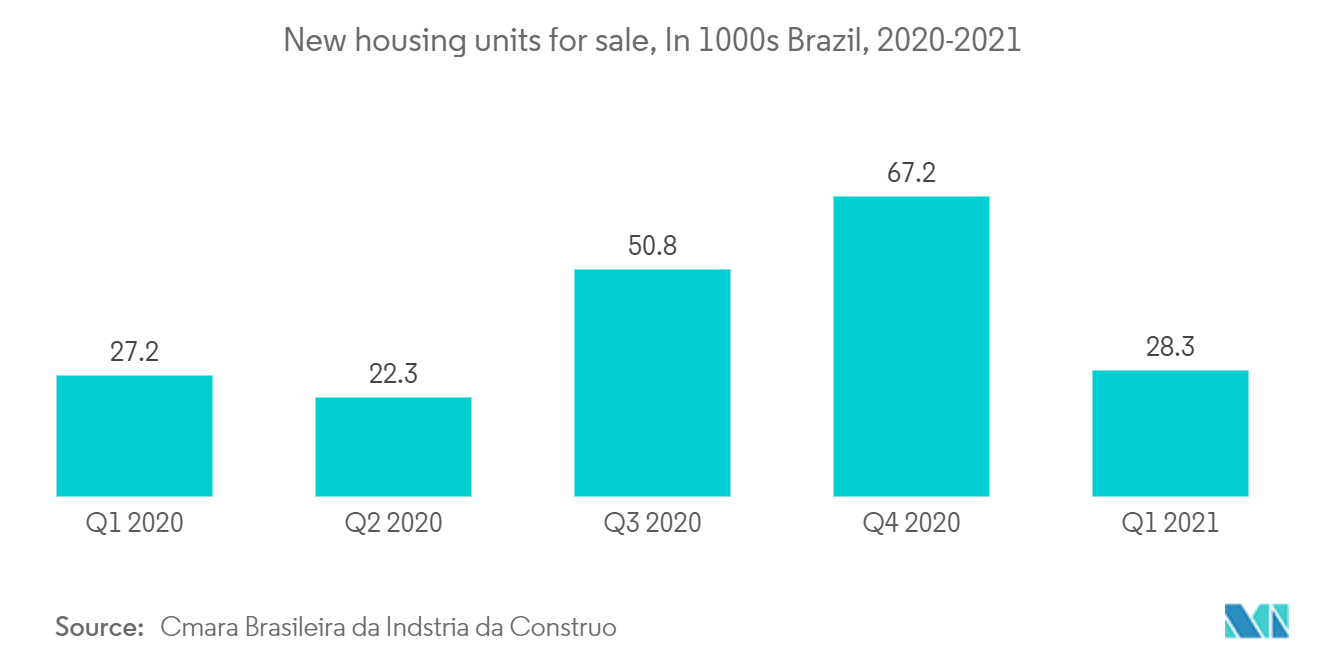
Precast Concrete Market Hold Major Share in the Prefab Buildings Market
According to an industry association, cement consumption will likely decline in the second half of 2023 due to a worsening general economic outlook. However, order books for the construction industry were ‘strong’ for at least the first six months of 2023, which would cushion the sector.
Precast concrete is one of the main contributing factors to the increase in the production and sales of cement. As the prefab market and modular construction activity increase, the need for cement also rises as there will be an immediate requirement.
The downturn is expected to be short-lived as interest rates ease slightly and stronger infrastructure volumes materialize in 2024 and beyond. The main driver of the cement consumption recovery was the real estate sector, especially the residential one, according to SNIC. The number of units financed for construction grew by 38% until November. Similarly, a 17% increase in residential launches accumulated up to September, emphasizing properties aimed at the middle and upper classes.
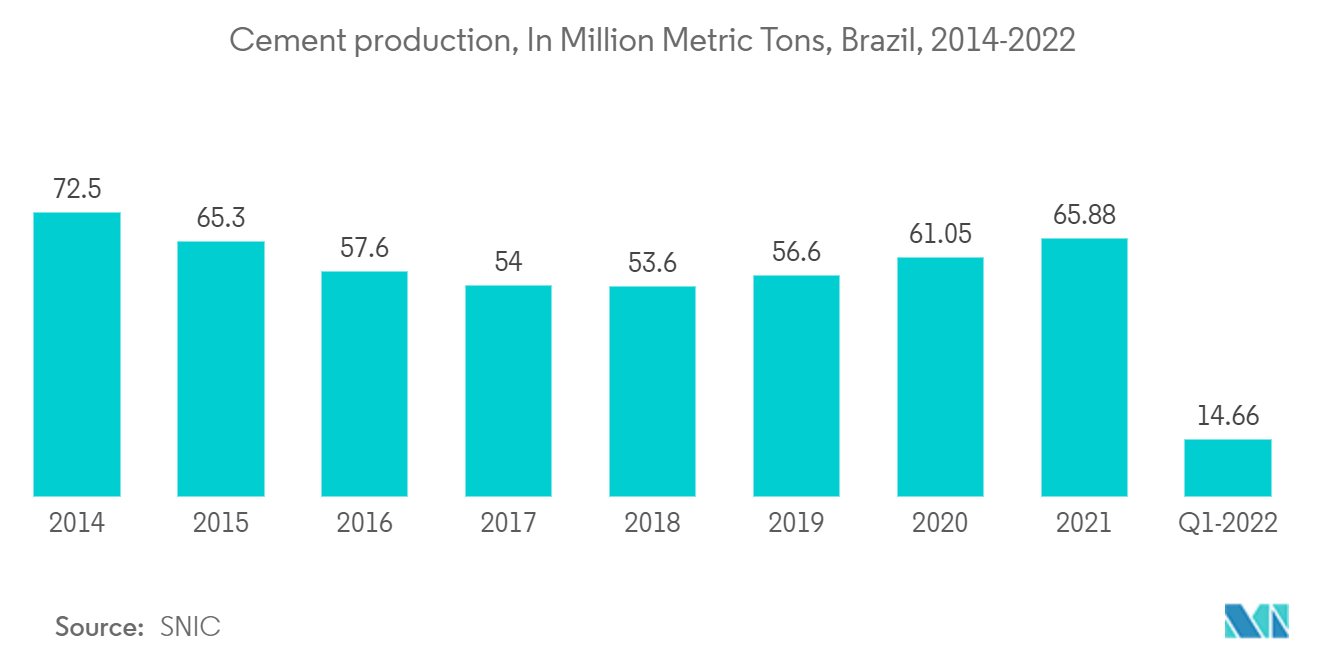
Brazil Prefabricated Buildings Industry Overview
The report covers the major players operating in the Brazil Prefabricated Buildings Industry. The market is fragmented and moderately competitive without dominant players. The Brazilian startup, SysHaus, in partnership with architect Arthur Casas, developed a project of sustainable smart homes that are ready in half the time of other prefab works.
The market is expected to grow during the forecast period due to the increase in prefab construction building start-ups, upcoming major projects in the country, and other factors driving the market. Prefabricated building systems and construction hold a high potential to improve the efficiency and performance of the Brazilian construction industry in a more sustainable sense. Construtech Ambar wants to take the hassle out of the millions of consumers across the country who are either building or renovating their homes with an all-in-one automation platform.
Brazil Prefabricated Buildings Market Leaders
Skanska Brasil Ltda
Medabil Industria Em Sistemas Construtivos Ltda
Martifier Group
Studio Arthur Casas
Brasmerc
*Disclaimer: Major Players sorted in no particular order
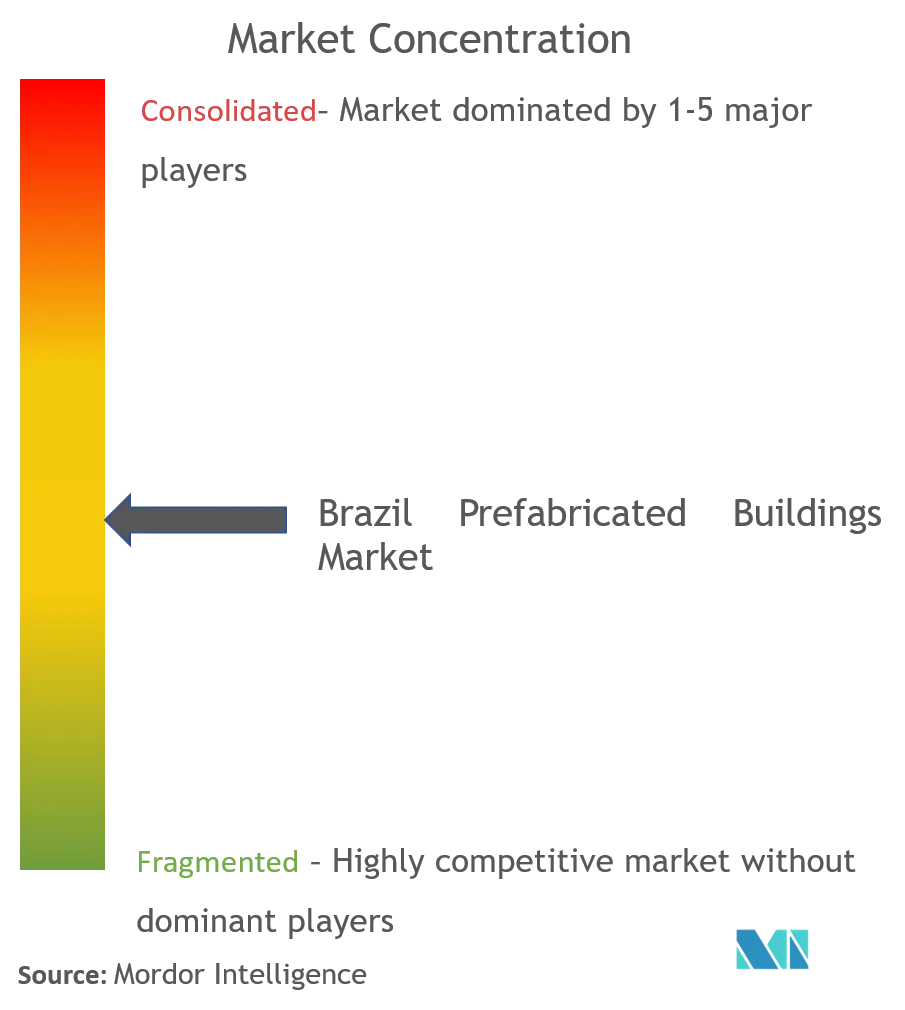
Brazil Prefabricated Buildings Market News
- December 2022: The PIN project status (Project of Potential National Interest) recognizes the strategic importance of the green hydrogen project GreenH2Atlantic for the Portuguese national economy and development. Martifer promotes the project.
- October 2022: The first in the logistics area of Brookfield Properties in Brazil, respecting the highest construction standards according to the company's notorious quality. Medabil is part of this project, using one of its most characteristic and widespread solutions in the market, Medajoist.
Brazil Prefabricated Buildings Market Report - Table of Contents
1. INTRODUCTION
1.1 Study Assumptions and Market Definitions
1.2 Scope of the Study
2. RESEARCH METHODOLOGY
2.1 Analysis Methodology
2.2 Research Phases
3. EXECUTIVE SUMMARY
4. MARKET INSIGHTS
4.1 Current Market Scenario
4.2 Technological Trends
4.3 Insights on Supply Chain/Value Chain Analysis of the Prefabricated Buildings Industry
4.4 Brief on Different Structures Used in the Prefabricated Buildings Industry
4.5 Cost Structure Analysis of the Prefabricated Buildings Industry
4.6 Impact of COVID 19
5. MARKET DYNAMICS
5.1 Drivers
5.2 Restraints
5.3 Opportunitites
5.4 Industry Attractiveness - Porter's Five Forces Analysis
5.4.1 Bargaining Power of Suppliers
5.4.2 Bargaining Power of Consumers / Buyers
5.4.3 Threat of New Entrants
5.4.4 Threat of Substitute Products
5.4.5 Intensity of Competitive Rivalry
6. MARKET SEGMENTATION
6.1 Material Type
6.1.1 Concrete
6.1.2 Glass
6.1.3 Metal
6.1.4 Timber
6.1.5 Other Material Types
6.2 Application
6.2.1 Residential
6.2.2 Commercial
6.2.3 Other Applications ( Industrial, Institutional, and Infrastructure)
7. COMPETITIVE LANDSCAPE
7.1 Overview (Market Concentration and Major Players)
7.2 Company Profiles
7.2.1 Skanska Brasil Ltda
7.2.2 Medabil Industria Em Sistemas Construtivos Ltda
7.2.3 Martifier Group
7.2.4 Siscobras
7.2.5 CasasBrazil
7.2.6 Brasmerc
7.2.7 Studio Arthur Casas
7.2.8 The Cassol Pre-Fabricados
7.2.9 BrasilCasas
7.2.10 Dextra
7.2.11 Impresa Modular *
- *List Not Exhaustive
8. MARKET OPPORTUNITIES AND FUTURE TRENDS
9. APPENDIX
9.1 Marcroeconomic Indicators (GDP breakdown by sector, Contribution of construction to economy, etc.)
9.2 Key Production, Consumption,Exports & import statistics of construction Materials
Brazil Prefabricated Buildings Industry Segmentation
A prefabricated building, informally a prefab, is a building that is manufactured and constructed using prefabrication. It comprises factory-made components or units transported and assembled on-site to form the complete building.
Brazil's Prefabricated Buildings Industry is segmented by material type (concrete, glass, metal, timber, and other material types) and application (residential, commercial, and other applications (industrial, institutional, and infrastructure)). The report offers market size and forecast for the Brazil Prefabricated buildings industry in value (USD billion) for all the above segments.
| Material Type | |
| Concrete | |
| Glass | |
| Metal | |
| Timber | |
| Other Material Types |
| Application | |
| Residential | |
| Commercial | |
| Other Applications ( Industrial, Institutional, and Infrastructure) |
Brazil Prefabricated Buildings Market Research FAQs
How big is the Brazil Prefabricated Buildings Market?
The Brazil Prefabricated Buildings Market size is expected to reach USD 3.09 billion in 2023 and grow at a CAGR of 5.54% to reach USD 4.04 billion by 2028.
What is the current Brazil Prefabricated Buildings Market size?
In 2023, the Brazil Prefabricated Buildings Market size is expected to reach USD 3.09 billion.
Who are the key players in Brazil Prefabricated Buildings Market?
Skanska Brasil Ltda, Medabil Industria Em Sistemas Construtivos Ltda, Martifier Group, Studio Arthur Casas and Brasmerc are the major companies operating in the Brazil Prefabricated Buildings Market.
Brazil Prefabricated Buildings Industry Industry Report
Statistics for the 2023 Brazil Prefabricated Buildings Industry market share, size and revenue growth rate, created by Mordor Intelligence™ Industry Reports. Brazil Prefabricated Buildings Industry analysis includes a market forecast outlook to 2028 and historical overview. Get a sample of this industry analysis as a free report PDF download.
